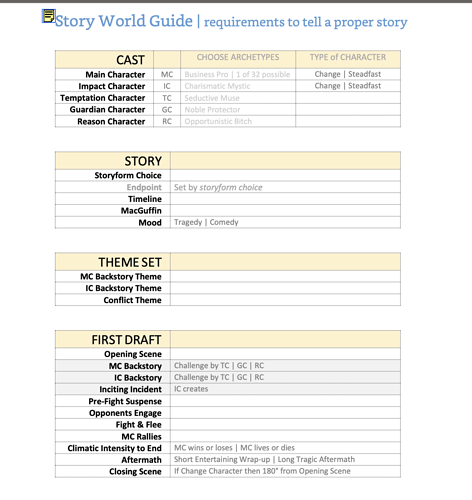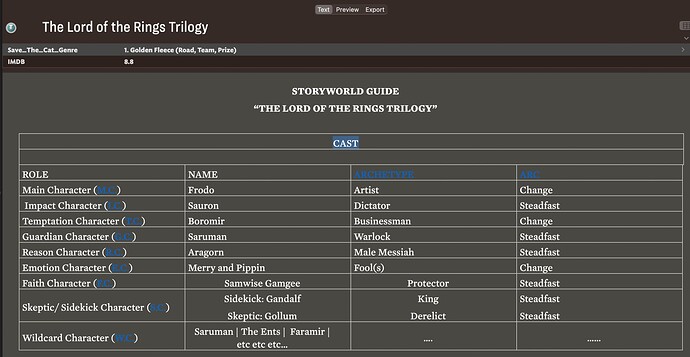OK, it’s a little unclear what you mean by ‘ziplink’ here, as there are not links that are ‘ziplinks’ only text links created by the ‘zip’ method, essentially the wiki-derived [[... style of notation. but once created you have a link that cannot (except by its creator) be known to be a zip-made link to one made by other means.
At this point you now have text “Fruits and Vegetables” where the word ‘Vegetables’ is the anchor of a text link to the note called “Vegetables”.
I can’t recreate the effect but I can guess the cause, which does look like a glitch. Essentially when the new table structure is added, it is confusing the code that updates the the drawing of the link anchors in text. Note: Tinderbox is a hypertext app stores links in a discrete linkbase separate from the notes; this is in comparison to a web/wiki based app where the link is embedded into the actual text. The anchor position should get updated. the fact is has just emerged probably reflects the fact this the first time i can recall anyone using a table in note text. Tinderbox isn’t a word processor although it has some such affordances—such a tables—via the underlying apple frameworks used to make the app.
The unmet explanation is explained in terms of a number of false assumptions. First there is no such thing as a discrete thing called a ‘ziplink’. That simple refers to a method of making a text link via typing as opposed to other methods.
When you set a prototype for a note, it inherits the prototype’s $Text only if the note currently has no $Text. This transfer occurs once only. So, if the prototype’s $Text is changed it has no effect on the $Text of the notes using the prototype. At the same time, you will have seen above that links aren’t stored ‘in’ text and links aren’t inherited form prototypes. thus even if you use the zip method and make a text link in the $Text of prototype, you should expect it to be inherited.
I think the confusion here is thinking Tinderbox is a web/wiki clone. In short: it is not. It is a much richer hypertextual tool that can create HTML (amongst other things). I’m not sure it’s stated anywhere that links aren’t inherited, because from with the app context one wouldn’t expect that, but clearly is used to web/wiki-based work where links are only possible via embedded code in text, one might think otherwise.
Meanwhile, Issue #1 looks like a glitch, so I’d contact formal Tech Support (tinderbox@eastgate.com) so you can explain the detail of re-creating the ‘moving anchor text’ problem: I couldn’t re-create it from your description.
So if #1 turns out to be an issue, any fix will need a new release. #2 is simply a case of getting use to Tinderbox’s linking and not thinking in terms of writing HTML/wiki code.

